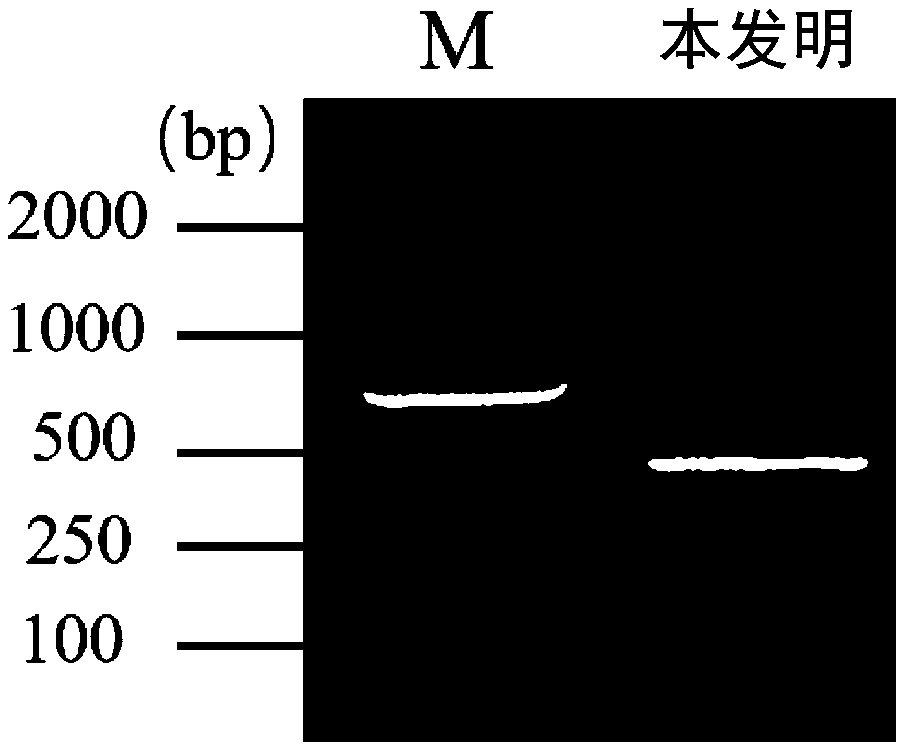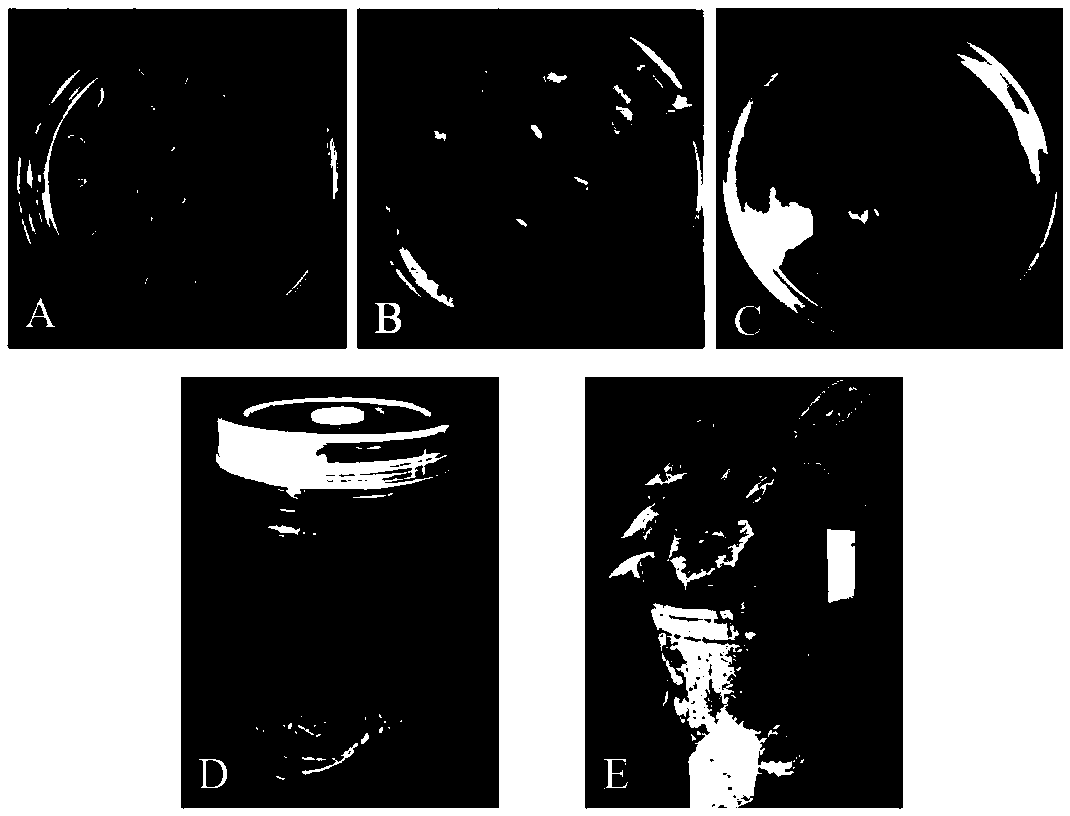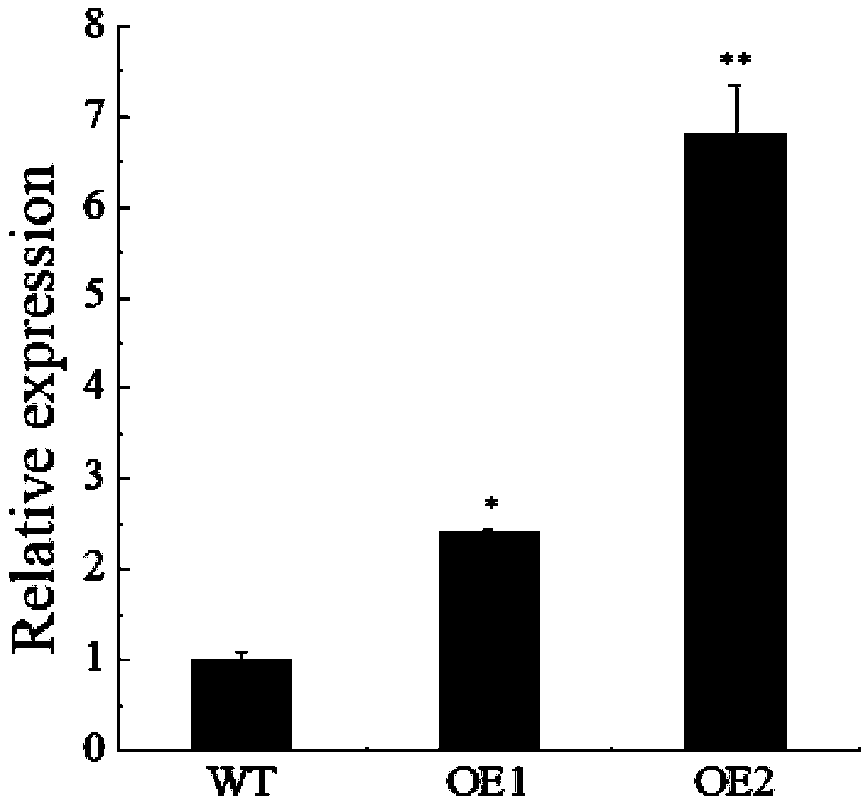Application of cucumber CsWRKY50 gene to strengthening downy mildew resistance of cucumber
A cucumber downy mildew and cucumber technology, applied in the field of crop genetic engineering, can solve the problems of pesticide pollution, yield decline, etc., and achieve the effects of safe application methods, improved resistance, and enhanced resistance
- Summary
- Abstract
- Description
- Claims
- Application Information
AI Technical Summary
Problems solved by technology
Method used
Image
Examples
Embodiment 1
[0020] Cloning of Example 1 Cucumber CsWRKY50 Gene and Construction of Overexpression Vector
[0021] (1) Xintai Mici was selected as the test material for the Huangguang variety. This variety has a strong growth potential, with rooting melons on the 4th to 5th nodes, melon-shaped rod-shaped, well-proportioned, green, with dense spines and longitudinal ribs, but not obvious. Cucumber seeds were sown in a solar greenhouse, and common cultivation and management were carried out. When the plants began to produce melons, the young leaves were taken for quick freezing in liquid nitrogen, and the RNA of the young cucumber leaves was extracted by using the Trizol (purchased from Life Technologies company) extraction solution. cDNA was obtained by reverse transcription using a reverse transcription kit from Thermo Fisher, and stored at -20°C for future use.
[0022] (2) Design amplification primers with restriction sites for the cucumber CsWRKY50 gene. The sequences of the primers an...
Embodiment 2
[0040] Example 2 Genetic transformation of cucumber CsWRKY50 gene and acquisition of transgenic plants
[0041] 1. Agrobacterium-mediated genetic transformation of cucumber genes
[0042] Use the Agrobacterium engineering bacteria LBA4404 containing pBI121-35S::CsWRKY50 overexpression vector to infect cucumber cotyledons, and after screening the differentiation medium and rooting medium, perform PCR detection on the regenerated plants with 35S upstream primers and gene downstream primers . The specific steps are as follows:
[0043] (1) Select plump cucumber seeds and soak them in water for about 1 hour, such as figure 2 As shown in middle A, first sterilize with 75% ethanol on a sterile bench for 30 seconds, then sterilize with 4.0% NaClO for 13 minutes, and finally rinse with sterilized ultrapure water for 3 to 4 times. Seeds were sown on MS medium plates with high-temperature sterilized tweezers, and cultured in the dark for 2 days. After germination and rooting, the c...
Embodiment 3
[0061] Embodiment 3 cucumber downy mildew resistance test
[0062] (1) Acquisition of cucumber downy mildew pathogen:
[0063] The diseased leaves containing the mold layer of downy mildew collected from the greenhouse were washed with water and placed in an incubator at 20°C, 90% relative humidity, and kept moist for 24 hours in the dark. When the gray mold layer grew, The diseased leaves are soaked in water, and the sporangia are brushed into a test tube filled with water with a brush to obtain the isolate. Inoculate the isolate on the leaves of the previously planted cucumber susceptible varieties, place the leaves in a large petri dish with water-soaked filter paper at the bottom, absorb the inoculum with a pipette gun, drop it on the back of the leaves, and place it at 22°C during the day and at night In a light incubator at 18°C, leaves covered with sporangia can be obtained from 4d to 6d. Before inoculation, brush the sporangia with a brush in a tissue culture bottle ...
PUM
 Login to View More
Login to View More Abstract
Description
Claims
Application Information
 Login to View More
Login to View More - R&D
- Intellectual Property
- Life Sciences
- Materials
- Tech Scout
- Unparalleled Data Quality
- Higher Quality Content
- 60% Fewer Hallucinations
Browse by: Latest US Patents, China's latest patents, Technical Efficacy Thesaurus, Application Domain, Technology Topic, Popular Technical Reports.
© 2025 PatSnap. All rights reserved.Legal|Privacy policy|Modern Slavery Act Transparency Statement|Sitemap|About US| Contact US: help@patsnap.com



